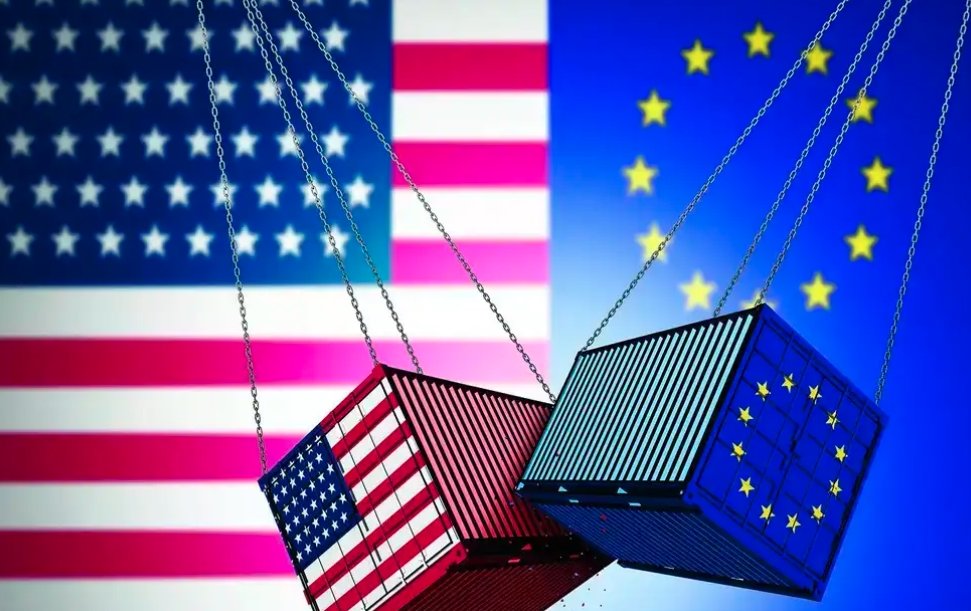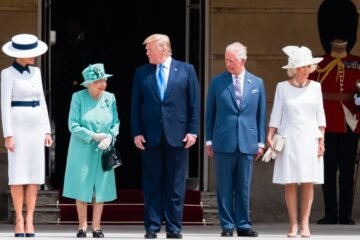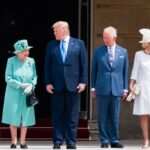The United States and European Union have agreed to a sweeping trade accord that slashes tariffs and ushers in hundreds of billions of dollars in cross-Atlantic investment, concluding months of economic brinkmanship between Washington and Brussels.
Announced after private talks at Donald Trump’s Turnberry golf course in South Ayrshire, the agreement imposes a 15% blanket US tariff on EU goods — a significant retreat from the 30% rate previously threatened by the White House. In exchange, Brussels committed to open markets, purchase American energy and defense equipment, and inject an eye-watering $600 billion in direct investment into the US economy.
“We have reached a deal. It’s a good deal for everybody,” said Trump on Sunday evening. “It’s going to bring us closer together.”
The Stakes: Nearly $1 Trillion in Annual Trade and a Political Score for Trump
The EU and US are two of the world’s largest trading partners, with bilateral goods trade topping $975.9 billion in 2024. The United States imported $606 billion in goods from the bloc last year while exporting $370 billion — a $236 billion trade deficit that Trump has frequently denounced as evidence of a “broken system.”
The new deal, which reduces the threat of a transatlantic trade war, also offers the Trump administration a political win just months ahead of the 2026 midterms. The agreement mirrors similar deals the US has recently signed with the UK (10% tariff rate), Japan (15%), Indonesia, and Vietnam — though Trump’s campaign promise of “90 deals in 90 days” remains far from fulfilled.

Von der Leyen: “A Huge Deal After Tough Negotiations”
European Commission President Ursula von der Leyen, who led the EU delegation, praised the deal as a pragmatic resolution to intensifying trade tensions.
“This is a huge deal. It brings stability to our transatlantic relationship,” she said. “President Trump is a tough negotiator, but he is also a dealmaker.”
Von der Leyen also stressed that the bloc’s expanded investment in US energy — including liquified natural gas, nuclear fuel, and oil — will help reduce Europe’s long-standing dependency on Russian energy exports.
“Energy security is economic security,” she added.
Inside the Deal: Energy, Arms, and Market Access
According to statements from both sides, the agreement includes:
-
$600 billion in EU investment in US infrastructure, technology, and manufacturing.
-
A $750 billion EU commitment to buy American energy resources.
-
Multi-billion dollar purchases of US military equipment.
-
Zero percent tariffs for select US goods entering the European market — though product categories remain undisclosed.
The US will maintain a 50% global tariff on steel and aluminum imports, a policy Trump defended as “essential” for national security and industrial revival.
Winners and Losers in the Deal
Winners:
-
US energy and defense firms, now poised for a windfall in European contracts.
-
American exporters, who gain greater access to EU markets.
-
Trump, who claims vindication for his aggressive trade policy.
Losers:
-
EU manufacturers, now facing a 15% US tariff — though less than feared.
-
Russian energy suppliers, as the EU pivots sharply toward American imports.
-
Free-trade purists, concerned that bilateral deals are undermining WTO multilateralism.
A New Era in Transatlantic Trade Relations?
While not as generous as the UK’s 10% tariff arrangement, the EU deal mirrors Japan’s 15% rate — positioning the bloc in line with other US-aligned economies. Analysts note that although the tariffs remain a cost, they are predictable and offset by reciprocal market access.
For Washington, the deal could generate up to $90 billion in tariff revenues based on current trade volumes, according to administration officials.
Yet some in Brussels remain wary. “This is a high price to pay to avoid a tariff war,” one unnamed EU diplomat told Politico Europe. “But it could have been worse.”


















